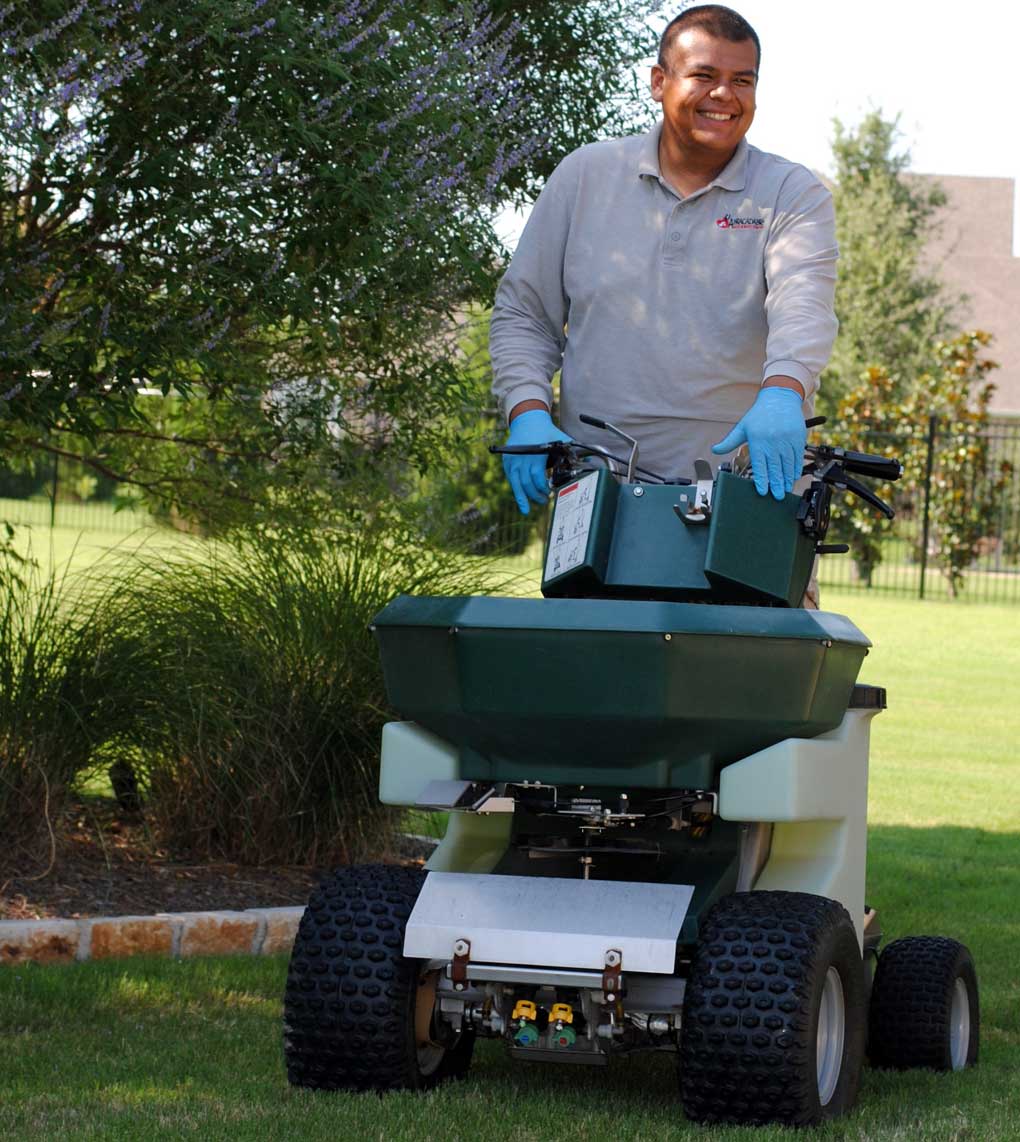Fertilizer Myths Busted: The Truth About Lawn Fertilization Every Homeowner Needs to Know
Common Lawn Fertilizer Misconceptions That Could Be Sabotaging Your Lawn
When it comes to achieving that perfect lawn, fertilization advice seems to come from everywhere—neighbors, online forums, and well-meaning relatives all have their theories. Unfortunately, many of these widely believed “facts” are actually myths that can waste your time, money, and potentially harm your lawn. With varying climate challenges and unpredictable weather patterns, following the wrong fertilization advice can be especially costly for your lawn care investment.
At Abracadabra Lawn Pest & Weed Control, we’ve been helping homeowners separate fact from fiction for years. Our certified lawn care professionals have seen the damage that fertilizer myths can cause, from burned grass and nutrient runoff to weakened lawns that become vulnerable to pests and diseases. We understand that every lawn is unique, influenced by factors like soil type, grass variety, local climate, and seasonal weather patterns. That’s why we base our recommendations on proven scientific principles rather than outdated assumptions. Our comprehensive approach combines soil testing, proper timing, and targeted treatments to ensure your lawn receives exactly what it needs, when it needs it. When you trust Abracadabra with your lawn care, you’re getting evidence-based expertise that cuts through the confusion and delivers real results.

Myth #1: “Fertilizer is Food for Your Grass”
One of the most persistent and damaging lawn care myths is the idea that fertilizer serves as “food” for your grass. This misconception leads many homeowners to believe that if their lawn isn’t thriving, it simply needs more “feeding”—resulting in over-fertilization that can actually harm your turf.
The truth is that grass, like all plants, creates its own food through photosynthesis. Fertilizer provides essential nutrients that support this natural process, but it doesn’t feed your grass directly. Think of fertilizer more like vitamins for your lawn—important for health and growth, but not a meal replacement.
This distinction matters because when homeowners believe fertilizer is food, they often assume that more is always better. Over-fertilization with nitrogen can cause rapid blade growth at the expense of root development, creating a lawn that looks green but lacks the deep root system needed to survive heat and drought.
Myth #2: “More Fertilizer Equals a Greener Lawn”
Homeowners often fall into the trap of thinking that doubling fertilizer applications will double their results. This “more is better” mentality is not only wasteful but can actually set your lawn back significantly.
Grass can only absorb and utilize nutrients at a certain rate. Applying more fertilizer than your lawn can use leads to several problems: nutrient burn that creates brown patches, excessive top growth that weakens the root system, and increased susceptibility to diseases and pests. Over-fertilized lawns also struggle more with drought stress because their shallow, rapidly-growing root systems can’t access deeper soil moisture.
The key to successful fertilization lies in timing, proper application rates, and understanding your grass type. Different grasses have specific nutrient requirements that vary throughout the growing season.
Myth #3: “Spring is Always the Best Time to Fertilize”
While spring fertilization is important, the timing myth that “earlier is always better” causes many homeowners to fertilize too early, wasting money and potentially harming their grass.
For warm-season grasses, the optimal first fertilization should occur when grass is actively growing and can effectively utilize nutrients. Fertilizing dormant grass provides no benefit and increases the risk of nutrient runoff.
Fall fertilization is often more important than spring feeding because it helps build root reserves for winter survival and promotes earlier spring green-up. Understanding your local climate and grass type is essential for proper timing.
Myth #4: “All Fertilizers Are the Same”
The assumption that any bag of fertilizer will work for any lawn situation leads to disappointing results and wasted money. Different grass types, soil conditions, and seasonal needs require specific nutrient formulations.
Soils vary dramatically in different regions, from clay soils to sandy areas and alkaline conditions. Each soil type affects nutrient availability differently. Additionally, warm-season grasses have different nutritional needs than cool-season varieties, and these needs change throughout the growing season.
Professional soil testing reveals your lawn’s specific nutrient deficiencies and pH levels, allowing for targeted fertilization that addresses actual needs rather than assumed problems.
Myth #5: “Organic Fertilizers Don’t Work as Well”
Some homeowners dismiss organic fertilizers as ineffective or believe they’re completely chemical-free. Both assumptions are incorrect and can lead to poor fertilization decisions.
Organic fertilizers do contain chemical compounds—the difference is that these nutrients come from natural sources and release more slowly than synthetic alternatives. This slower release provides several advantages: reduced risk of burning during hot weather, longer-lasting nutrition, improved soil biology, and better moisture retention.
However, organic fertilizers aren’t automatically better for every situation. They typically work more slowly than synthetic options and may not provide the quick green-up that damaged lawns sometimes need.
The Professional Advantage
Navigating fertilizer facts versus fiction requires expertise that goes beyond reading product labels. Professional lawn care providers bring soil testing capabilities, knowledge of local climate patterns, access to commercial-grade products, and the experience to adjust treatments based on your lawn’s response.
At Abracadabra Lawn Pest & Weed Control, we eliminate the guesswork from lawn fertilization. Our programs are designed for local conditions, taking into account everything from frost dates to summer heat stress patterns. We monitor your lawn’s progress and adjust our approach as needed, ensuring optimal results while protecting your investment and the environment.
Ready to stop believing fertilizer myths and start seeing real results? Contact Abracadabra Lawn Pest & Weed Control today for a comprehensive lawn analysis and customized fertilization program. Our expert team will create a science-based plan tailored specifically to your lawn’s needs. Call us now and discover what professional, myth-free lawn care can do for your property!
